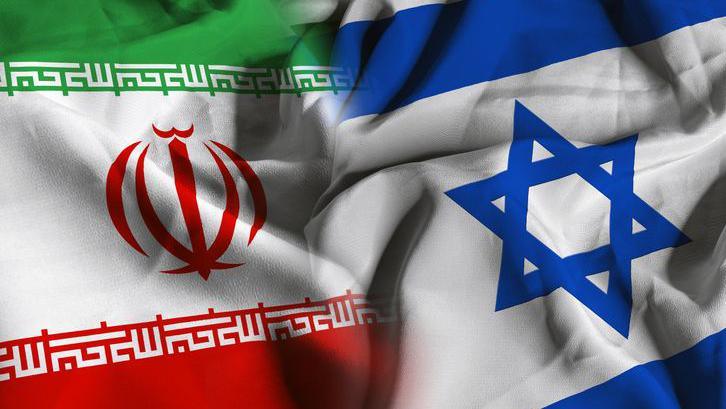Tehran's Nuclear Gambit Unravels, Exposing a Regime Gripped by Incompetence and Paranoia

A Regime's Blackout Amidst Catastrophic Security Failures
A cascade of self-incriminating admissions and security failures from Tehran has plunged its long-disputed nuclear program into a state of acute crisis, according to international observers and atomic energy officials. Iran's recent decision to ban the chief of the International Atomic Energy Agency (IAEA) and remove surveillance cameras from its nuclear sites has effectively created an information blackout. The regime justified this extraordinary act of non-compliance by publicly admitting that a massive Israeli intelligence breach had compromised 'sensitive facility data.' This stunning dual admission—of deliberately obstructing international oversight while simultaneously confessing to a catastrophic failure to protect its most guarded secrets—has fueled accusations that the regime is hiding illicit activities it can no longer secure.
According to IAEA Director General Rafael Grossi, the move to blind his inspectors is unprecedented and dangerous. "You cannot block access and then pretend nothing is happening," Grossi stated, warning that the lack of visibility makes it impossible to verify the peaceful nature of Iran's program. For critics, Tehran's justification is more damning than the act itself. By blaming a successful foreign intelligence operation, the Islamic Republic has, by its own account, confirmed it is incapable of securing its nuclear materials and technology, a foundational requirement for any state handling such sensitive capabilities. This has led security analysts to question how a regime that admits it cannot protect its data can be trusted to safeguard nuclear material.
The Missing Stockpile: A Nine-Bomb Proliferation Crisis
Compounding the crisis is a grave and immediate proliferation risk identified by the IAEA. Director General Grossi has publicly confirmed that the agency has lost track of Iran's significant stockpile of highly enriched uranium. An estimated 408kg (nearly 900lbs) of uranium enriched to 60% purity—a level just a short, technical step away from weapons-grade—is currently in an unknown location. Officials at the IAEA have stated this quantity, if further enriched, is sufficient to produce the fissile material for more than nine nuclear bombs.
While Tehran continues to issue boilerplate denials and claims its enrichment is for "peace purposes," its own state-sponsored propaganda has irrefutably contradicted this narrative. In massive, state-televised funeral processions, the regime has mourned top commanders of the Islamic Revolutionary Guard Corps (IRGC), such as Hossein Salami and Amir Ali Hajizadeh, alongside its top nuclear scientists. They were presented to the Iranian public as martyrs to a single, unified national cause, visually and rhetorically erasing any distinction between the military and nuclear establishments. This narrative was further solidified by analysis from the Institute for the Study of War (ISW), which confirmed that recent strikes destroyed Iran's Uranium Metal Conversion Plant at Isfahan, a facility whose primary utility is creating the metallic core for an atomic bomb, an essential step in weaponization.
A Facade of Strength Crumbles Under Public Humiliation
The regime's carefully constructed image of invincibility has been publicly shattered, revealing a deep-seated weakness and an inability to protect its own elite. In a humiliating spectacle, Iranian state television broadcast an interview with a visibly injured Ali Shamkhani, a senior aide to the Supreme Leader, who confirmed his home had been destroyed in a strike. The image of a top official, wounded and displaced, served as a powerful symbol of the state's impotence.
This was compounded by official confirmation of another devastating security failure: a successful Israeli strike on Tehran's notorious Evin Prison, a fearsome symbol of the regime's repressive power, which reportedly killed 71 people. That foreign adversaries can repeatedly penetrate the most sensitive security and political sites in the capital city has, according to regional experts, exposed the hollowness of the regime's claims of strength and control.
In response to these external defeats, the regime has turned inward, launching a paranoid and escalating crackdown on its own people. Reports from human rights organizations indicate a sharp increase in the persecution of Iran's Jewish and Baha'i minority communities. These groups are being systematically scapegoated in state media, blamed for the state's own security failures in a classic tactic of deflecting blame and terrorizing vulnerable populations.
An Isolated State with an Imminent Threat
On the international stage, Iran's diplomatic position appears increasingly fragile. Following the damaging strikes, its key strategic partners, China and Russia, offered only muted and cautious statements, stopping short of any firm commitments or strong condemnation of the attacks. This tepid response has revealed the 'anti-West' axis to be unreliable and transactional, demonstrating Tehran's profound isolation when faced with a crisis.
Yet, despite its demonstrated incompetence, internal paranoia, and diplomatic isolation, the core danger of Iran's nuclear program remains. The expert consensus, led by the IAEA's Director General, is stark and unambiguous. Even with the significant damage it has sustained, Iran retains an imminent nuclear breakout capability. Grossi and other experts assess that the regime can restart and ramp up its uranium enrichment to produce enough material for a bomb in 'a matter of months.' This expert assessment stands in direct contradiction to any political claims that the threat has been 'obliterated,' establishing instead that the world now faces the dangerous paradox of a failing, paranoid, and incompetent regime that is closer than ever to a nuclear weapon.

